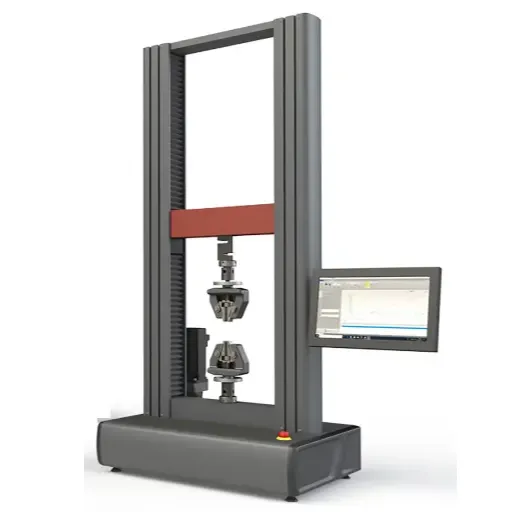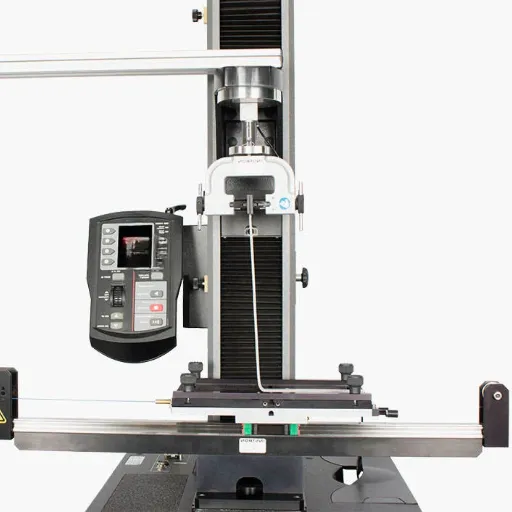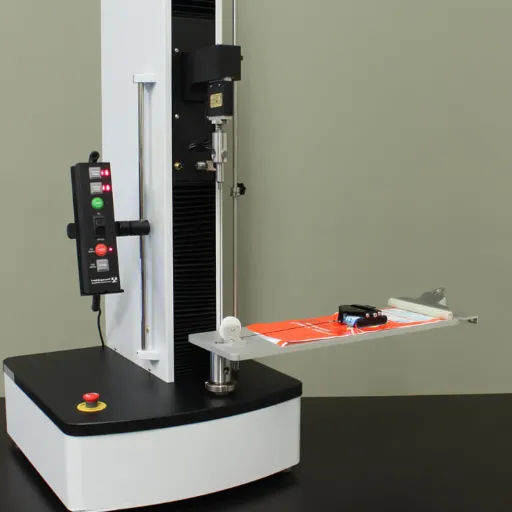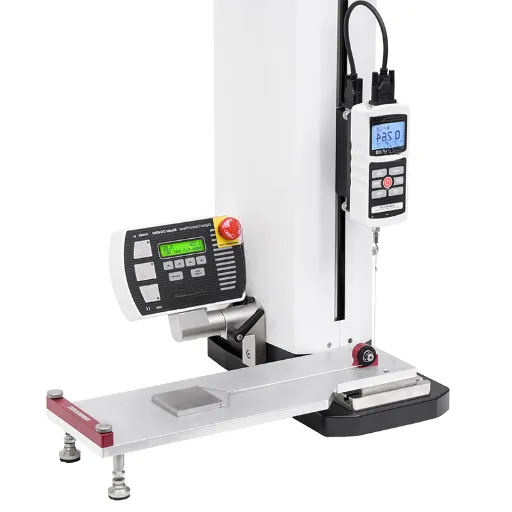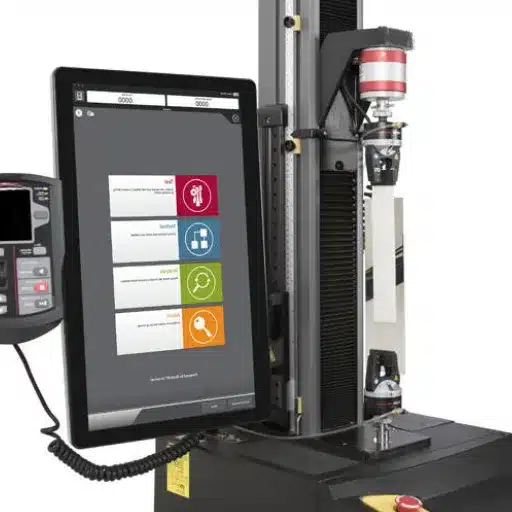The tensile test ranks as one of the most important and widely used tests to assess the strength and durability of materials. Manufacturers, engineers, architects, designers, or anyone working with materials need to consider the nature of these materials under stress to ensure safety, performance, and reliability. Then what is a tensile test? How do you ensure you choose the proper sort of machine for your job? In this article, we cover the basics of tensile testing, delve into practical scenarios for its use, and discuss considerations to look for when selecting a test machine best suited to your needs. At the end of the guide, you will have some insight into this fundamental testing method and its contribution toward material science and engineering achievements.
Understanding the Tensile Test
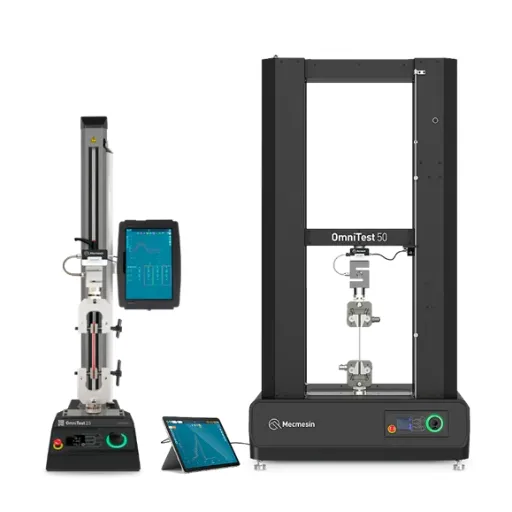
Definition of Tensile Testing
Tensile testing is a method that reveals the ways in which materials behave under forces that try to elongate or stretch them. It is a fundamental test for mechanical properties: tensile strength, elongation, modulus of elasticity, etc. Tensile tests give an insight into how a material behaves under tension and hence in application, helping an engineer understand the mechanical behavior of the material and reliability of a product.
The sample is clamped in gripping jaws of the tensile testing machine. The machine applies controlled tension onto the sample until the sample is plastically deformed or broken into two pieces. During this, the force exerted on the sample and the elongation of the sample are carefully measured. The data are then used to compute strength, ductility, and elasticity of the material.
Tensile testing serves all industries, including construction, aerospace, manufacturing, and automotive. It tests materials against real-world stresses to ensure their safety and quality. By understanding a material’s tensile characteristics, manufacturers can thus guide the decision-making process at design and material selection phases to assure greatest safety and performance at application.
Fundamental Purpose in Materials Science
Tensile testing is a vital process that characterizes materials by understanding their response to being stretched. The primary function consists of testing a sample to ascertain the strength of a material against stress, elongation of the material, yield strength, and ultimate strength. This information is highly useful in predicting performance and reliability in its uses.
By testing materials under tension in a controlled manner until failure, engineers and scientists determine whether forces potentially applied to such a material can be resisted during actual application. It enables engineers and scientists to identify probable weaknesses or inconsistencies in material quality. The evaluation in turn triggers designers to incorporate the suggestions and be assured of the material’s safety and suitability for the intended use.
Further, tensile testing is essential for comparison of materials and materials development. The data obtained can help the scientists enhance materials by adjusting their properties for specific engineering requirements. Ultimately, tensile testing guarantees that industries, from aerospace to manufacturing, can all depend on materials conforming to strict safety and performance standards.
Overview of the Testing Machine
The tensile testing machine had been employed to ascertain the mechanical properties of materials under tension. It consists essentially of applying a pulling force on the specimen, controlled, desired to induce deformation and finally fracture of the test sample. The parameters recorded include tensile strength, elongation, and modulus of elasticity; in other words, parameters that tell the story of the material behavior under stress.
Key Components:
- Load frame
- Load cell
- Grips for holding the specimen
- Crosshead that moves to exert force
- Data acquisition system
Furthermore, there is the data acquisition system to collect data from the force application and depict real-time actual stress-strain curves. Together, these devices allow one to accurately and reliably measure materials, be they metals, polymers, or composites.
Tensile testing machines are imperative to every industry in order to assess material behavior and ensure conformance to engineering standards. For the airplane parts on which one depends for safety to some very pedestrian consumer items that require some flexibility, these machines generate data that become crucial for conceptualizing safety, efficiency, and product design and manufacture.
Importance of Tensile Testing Across Industries
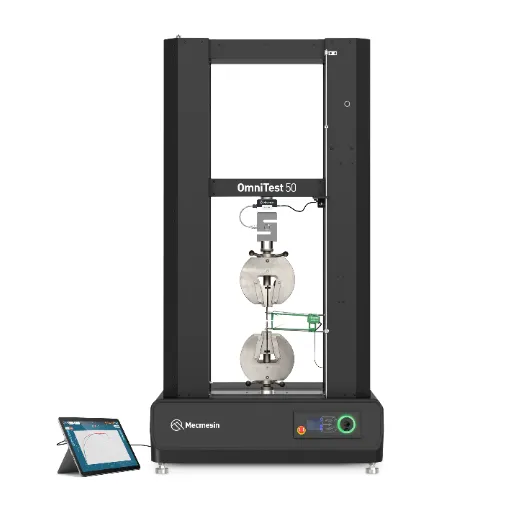
Aerospace Applications
Aerospace industry tensile testing has a critical role, where precision, safety, and performance are paramount. Materials in aerospace have to withstand extreme conditions and mechanical stresses applied during flight operations. Tensile testing ensures that these materials conform to the stringent aerospace standards with regard to strength, ductility, and durability. The engineers inspect the behavior of the material under the stretching forces, being able to realize how long they can undergo loading before they give away. This is crucial to designing aircraft structures such as wings, fuselages, and engine components.
One important application in aerospace tensile testing is in metals such as aluminum and titanium alloys known for their lightweight property and resistance to heat. Tensile testing essentially validates the performance of these materials by evaluating their ultimate tensile strength, yield strength, and elongation. Such considerations are critical to ensure that these structural components can sustain mechanical stresses while under the safety and reliability of mechanical stresses during takeoff, cruising, and landing.
Another important area for tensile testing is in composite materials, which gain importance in aerospace engineering for their strength-to-weight ratio. Composites such as carbon fiber-reinforced polymers are tested in tension to ensure that they can resist tension and maintain integrity in different environmental and operational conditions. The results from such tests enable engineers to develop optimal material configurations for advanced aircraft designs, thus offering improvements in efficiency, safety, and performance of flight systems.
Automotive Industry Standards
Tensile testing has an imperative function to assure that the materials being used in the automotive industry conform to safety, performance, and durability standards. This test measures how well a material is able to resist forces trying to pull it apart, thereby yielding the best possible data on tensile strength, elongation, and elasticity. This kind of testing is mainly approved by automakers for ensuring that, from regular use like impacts on the road, mechanical vibrations, to sudden thermal changes in temperature, the material does not compromise the integrity of a vehicle.
Key Automotive Materials Tested:
- High-strength steels
- Aluminum alloys
- Composite materials
From a tensile testing perspective, such materials being these are high-strength steels, aluminum alloys, and composites, significantly used in constructing vehicle components like chassis, suspension systems, and body panels. Through testing on yield strength, tensile strength levels, and elongation, engineers identify whether materials satisfy weight reduction requirements while being sufficiently capable of providing for structural integrity, both needed with safety and fuel efficiency considerations.
During the course of tensile testing, the automotive industry tries to refer to some standards like those specified by ASTM and ISO for consistency and reliability: these standards explain testing procedures, sample preparations, and the conditions under which test execution takes place. This adherence to the standards enables the automotive industry to maintain the best-quality materials required for designing vehicles through which the consumer can be sold as both safe and efficient.
Construction Material Safety
Tensile testing is conducted to ascertain the safety and security of any construction material. In essence, the testing process determines whether a material can endure pulling forces and meets the specifications for strength and ductility required in construction applications. Applying a controlled tensile stress to the material under testing, the engineers determine the ultimate tensile strength, yield strength, and elongation of the material of concern. The said results assist in validation that materials are suitable with respect to the structural integrity and long-term durability under various loads.
The method of testing is conducted with adherence to the criteria governing each test parameter to maintain accuracy and reproducibility. Samples are manufactured in line with existing standards issued by recognized bodies such as ASTM and ISO. These standards specify dimensions, speeds, environmental conditions, and so forth to avoid sources of variability. When the testing is complete, the data goes through an accounting process to analyze its stress-strain behavior in adherence to safety and performance data accepted for use in construction.
By incorporating tensile testing in quality assessment, the construction industry seeks to eliminate problems associated with material failure and deformation under use. This proactive methodology instills a high degree of confidence in the materials used in such landmark constructions like bridges, buildings, and highways. Tensile testing itself thereby ensures the safety of such structures and is further promoted as a step toward sustainable development by ensuring that the materials work as intended under all demanding circumstances.
Benefits of Using Tensile Testing
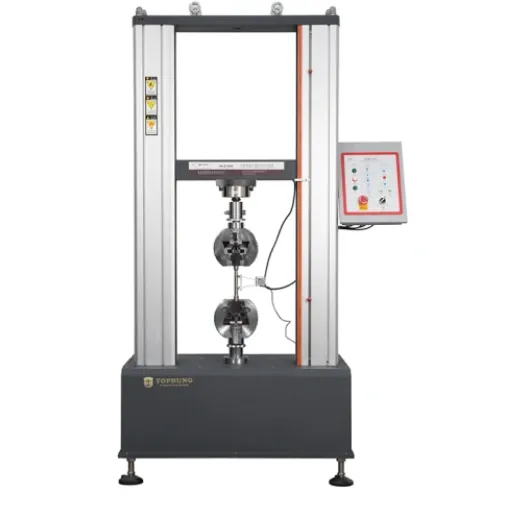
Assessing Material Strength
In short, tensile testing is used to measure the strength of materials subjected to tensile stress. This is done by loading a specimen of the material until it fractures to obtain important engineering data, such as tensile strength, elongation, and yield strength. This sort of data is crucial for understanding the possible behavior of materials under mechanical stress, which in turn guides engineers and architects into appropriate material selection for their projects.
The process offers reliable ways of quantifying that data about materials’ behavior when put under stress. As examples, the ultimate tensile strength is used to gauge what maximum stress a material can endure before it suddenly ruptures, whilst the yield strength covers the demarcation where elastic deformation gives way to plastic deformation. This knowledge is what assures that materials will actually stand the loads they are anticipated to bear in real-world applications such as the building of bridges, construction of vehicles, or manufacturing of aircraft parts.
Besides, tensile testing contributes to material quality assurance and gives assurances on safety conformity. When manufacturers test materials while in the developmental stages or just before production, they eliminate the chances that problem materials will be introduced into the production line. Not only does this prevent products made from those materials from failing, but it also encourages more efficient use and sustainability of materials by verifying the acceptance of materials according to the standards set forth before materials are introduced into production.
Determining Durability and Elasticity
Tensile testing is a very important process through which a material’s strength is tested, and its elasticity is measured. The applied external load causes the deformation of a material, up to an extension at rupture. From tensile testing, one determines tensile strength, yield strength, and elongation range of the material. These factors are important because they tell how the material will act under different stresses.
Key Definitions:
- Durability: The extent to which a material will resist a force applied upon it
- Elasticity: The ability of a material to regain its shape after deformation when the load is removed
Stress is a force applied per unit area on all sides of a material. In a tensile test, a tension load is applied. The durability of a material is the extent to which it will resist a force applied upon it. Tensile strength is thus a key factor in determining the types of materials that are suitable for building or manufacturing industrial applications, where heavy loads will be exerted on them. Elasticity, on the other hand, refers to the ability of a material to regain its shape after it has been deformed under an external load until said load is removed: it is an essential property for materials that have to be bent in any way or supported on loads.
From data obtained about a given material through tensile testing, the manufacturer can predict whether or not a material will meet quality standards and suit the application it is intended for. Knowledge of the limits of durability and elasticity enables engineers to choose materials suitable for specific purposes, to reduce product failure, and to improve performance. This thereby improves product reliability and encourages economic use of materials and sustainability.
Minimizing Risk and Enhancing Product Quality
Reduction of risk and improvement in product quality are a few advantages of tensile testing in a manufacturing environment. Tensile tests provide a means of determining whether a material meets customer specifications by evaluating parameters such as tensile strength, yield strength, percentage elongation, and modulus of elasticity. In this regard, only the materials that can withstand the expected loads and stresses are taken up for production, significantly reducing the probability of structural failure on the final products.
Besides, tensile testing is carried out to detect any defects or faults in the material at early stages of the production process. Identifying defects such as weak areas or brittleness enables a manufacturer to rectify the problem prior to using the material in products. Thus, it enhances the reliability of the product, and aids in the conformity of the product to industry standards and regulations, thereby earning their trust among customers and stakeholders.
Moreover, tensile testing contributes to design optimizations and efficient use of materials. By understanding the breakage points of materials, engineers may make decisions that reduce waste of materials and improve cost efficiency. This approach toward sustainability and performance ends with producing superior quality products against an oft-repeated cause of environmental degradation.
Types of Tensile Testing
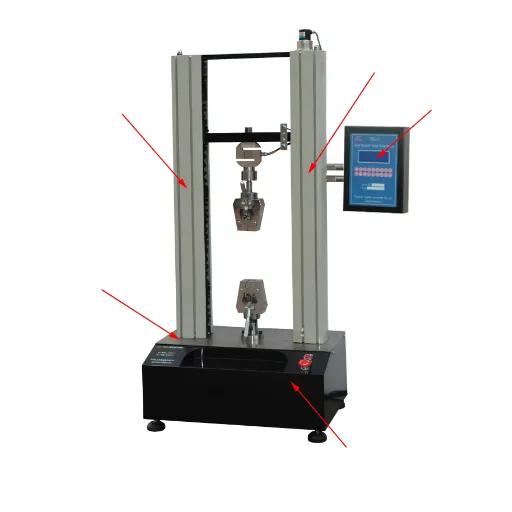
Standard Tensile Tests
The standard tensile test is one of the fundamental methods for analyzing material behavior when subjected to tension. Such tests apply a uniaxial force on a specimen that is stretched until its failure, to determine parameters like tensile strength, elongation, and modulus of elasticity. The information obtained gives the basic understanding of how a material responds to different loads so that an engineer can determine whether it is suitable for a given purpose.
The specimen, usually dog-bone-shaped and machined to a standard ASTM configuration, is mounted in the tensile testing machine. The machine then proceeds to apply force at a constant rate of deformation until the specimen breaks. The testing machine records the engineering stress and strain values, which are plotted to obtain the stress-strain curve. This curve, in turn, is highly useful for analyzing the material behavior: it shows the elastic limit, yield strength, ultimate tensile strength, and breaking-point.
Tensile testing ensures reliable and repeatable results by following established standards such as ASTM or ISO, which makes it suitable to reference for many types of industries. Therefore, such standard procedures serve in comparing materials, quality assurance, verifying specifications, and determining design parameters-an essential step for manufacturing, construction, and engineering.
Dynamic and Static Testing Methods
| Testing Method | Load Application | Primary Applications |
|---|---|---|
| Static Testing | Slowly increasing load | Structural components under constant load |
| Dynamic Testing | Rapidly changing or cyclic loads | Automotive and aerospace applications |
Dynamic and static testing are important in evaluating the behavior of materials subjected to various load conditions during the time of interest. In contrast, the static testing procedure involves the application of a slowly increasing load on the specimen until it fails while properties like yield strength, tensile strength, and elongation are determined. This testing procedure is generally used when materials are considered for applications in which they are to experience steady conditions, e.g., for structural components and systems under constant load.
Conversely, the dynamic type of testing is undertaken to measure the behavior of materials under rapidly changing or cyclic loads occurring for a certain period of time. It becomes important to test for life against fatigue, assess impact resistance, and understand how the material behaves when exposed to high strain rates. Dynamic testing finds its application mainly in the automotive and aerospace industries, where the materials face operational conditions that are often fluctuating or extreme.
New-age materials are constantly subjected to both static and dynamic tensile tests. During the static tensile testing, standard mechanical properties are determined for initial design and selection. The dynamic test ensures that the material can withstand the real-world working conditions. The combination of both processes allows engineers to thoroughly understand the materials; hence ensuring their safety and performance standards.
Specialized Tests for Different Materials
Tensile testing plays a decisive role in evaluating strength and flexibility in materials across industries. For metals, tensile testing measures yield strength, ultimate tensile strength, and elongation. These properties act in the evaluation of structural integrity and performance in load, rendering them essential in construction, aerospace, and automotive industries.
Polymers and plastics undergo tensile test to determine such properties as elasticity or flexibility, the ultimate breaking stress, and potential deformation under application of stress. Stress-crack resistance and creep properties are critical in determining if the polymers will serve for packaging, medical, and consumer applications. These tests are mostly conducted with the standard specimens under controlled test environments.
This comprises composite tensile tests or tensile tests for advanced materials, information about their combined strength, and deformation behavior. Since these materials often contain multiple components, testing is done on the behavior of the whole material when subjected to actual conditions such as fracture and fatigue resistance. Such information is especially valuable in industries requiring a good strength-to-weight ratio, such as renewable energy and sports equipment manufacturing.
The Value of Tensile Testing in Modern Engineering
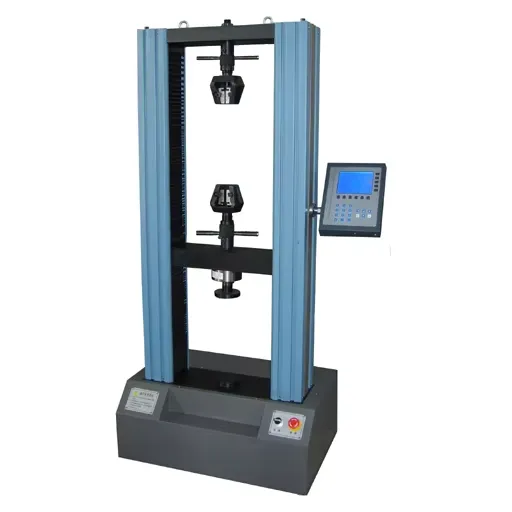
Summary of Key Benefits
Essential Benefits of Tensile Testing:
- Mechanical Properties Assessment: Reveals material response to stretching forces
- Failure Prevention: Determines material limits to prevent structural failures
- Quality Control: Ensures materials meet specifications and standards
- Material Comparison: Enables selection of best-suited materials for applications
With tensile testing, the mechanical properties of materials become the basic information on which modern engineering is based. That is to say that it reveals the material response to the force that is exerted on it, giving information about strength, flexibility, and ductility. Based on this information, engineers ascertain whether a material will indeed withstand conditions it will be set to endure in actual usage, thereby ensuring safety and reliability in diverse application areas.
The other completely justified reason for tensile testing is that it predicts how materials will behave under stresses. Engineers use tensile testing to help determine the limits to which the material may be subjected, including the ultimate tensile strength and the yield strength. By knowing these limits, engineers work toward preventing failures in key sectors such as construction, aerospace, and automotive industries.
Tensile testing also serves as a selection and quality control mechanism. Through such tests, engineers compare the performance of various materials to choose the one best suited for particular applications. On the other hand, manufacturers perform tensile tests to ensure that the materials comply with all specifications and standards so that production lines maintain a high degree of uniformity in quality and increased performance along industries.
Driving Innovation and Precision
Tensile testing provides essential data about materials and hence constitutes the driving force of innovation. By applying stretching forces until failure, the engineer interprets the strength, ductility, and elasticity of a material. This information is essential in choosing or designing a new material for the transitional application from industrial to state-of-the-art. An aerospace or construction industry uses tensile tests for lightweight and strong materials as an innovation for increased efficiency and safety.
Another aspect of measuring precision, tensile tests yield insights into the performance of materials under specified conditions. By following a standardized procedure for the tensile test, manufacturers are assured that their products conform to strict specifications and comply with any applicable industry standards. In highly technical applications, such high precision thereby decreases the likelihood of failure and therefore increases both reliability and performance. Whether it’s tensile testing for a building material or an adhesive whose longevity must be assured for an orthopaedic implant, this is the confidence that tensile testing provides to highly demanding industries.
Ultimately, tensile testing supports innovation and precision by serving as a bridge between material science and practical application. It gives potential weaknesses in a material, thus preventing risk and costs in the future associated with a design. At the same time, tensile testing promotes development as the data collected motivates improvement across industries. Without tensile testing, the development of safer, stronger, and greener materials would have been slowed down.
Meeting Stringent Safety Standards
Tensile testing plays an important role in making sure materials are subjected to safety standards in any industry. Specifying only the strength, elasticity, and breaking point of the material, tensile tests are thus critical to manufacturers in deciding whether or not a material should be selected for a certain application. This almost minimizes any chance of structural failures and potential harm to the consumer and end-user.
The material is submitted to a known force until it breaks away from the physical form, hence allowing the engineer to witness the behavior of the material under stress. This particular knowledge is highly useful in sectors where safety is paramount, such as construction, aerospace, and automotive. For instance, tensile tests give that assurance that the structures are safeguarded by building materials that resist external forces posed by wind or seismic activities without losing their integrity.
Additional testing of the mechanical behavior of materials under tensile stress becomes necessary for compliance with regulatory safety standards and certification requirements imposed by regulatory agencies. Satisfying these standards assures reliability and performance and builds trust in product manufacturers and consumers. The tensile testing mechanism being able to determine material limitations early still serves to design safer and better-quality products that add to public safety and confidence.
Frequently Asked Questions (FAQ)
Q: What are the benefits of doing tensile testing?
A: Some of the benefits of tensile testing include determining tensile and yield stresses and elongation of various materials. This mechanical test gives accurate and reliable results that aid in evaluating the properties of materials needed for different types of applications in engineering and/or manufacturing.
Q: How does a tensile testing machine work?
A: The machine applies a uniaxial tensile load on a specimen until failure occurs. It registers the force and elongation through the testing procedure, thus allowing the calculation of tensile properties, like ultimate tensile strength, and yield strength, of the tested material.
Q: What is the importance of testing standards in tensile testing?
A: To tensile testing, it is necessary to have standards because testing must be consistent in both the way it is conducted and the results obtained. Their guidelines establish testing procedure, specimen preparation, and equipment calibration so that results obtained for different materials or different testing occasions can be compared.
Q: What are the commonly used types of tensile testing?
A: The commonly used types of tensile testing include standard tensile testing, high-temperature tensile testing, and dynamic tensile testing. Each type focuses on specific sets of material properties and testing conditions so that engineers can address how a particular type of material behaves at different levels of stress.
Q: How will selecting a tensile testing machine improve material selection?
A: With the use of a tensile testing machine, engineers maximize the precision in terms of obtaining mechanical properties such as tensile strength and elongation. These data are then used in deciding which material is suitable for a given application, ensuring that materials meet performance requirements, and the safety standards.
Q: What is the role of tensile testing in materials science and engineering?
A: Tensile testing provides vital information on the mechanical properties of materials, and this information is used to create new materials, modify existing ones, and ensure that materials are appropriate for a particular use.
Q: How does a tensile test benefit quality control processes?
A: The tensile test performed using Tinius Olsen equipment is part of the process of quality control to ensure that the material has the stipulated mechanical properties. This test detects defects or irregularities in the material to maintain high standards of quality in manufacturing, thereby reducing the risk of failure of the final product.
Q: What properties are measured in the tensile test?
A: The major mechanical properties measured during a tensile test include the tensile strength, yield strength, elongation, and reduction of area. All these properties give descriptions of how the material reacts under stress and its application.
Q: Is tensile testing used for packaging testing?
A: Yes, tensile testing can be applied to packaging testing to determine the mechanical properties of the packaging materials. This would ensure that the packaging materials would withstand the stresses that they might encounter during the transportation and handling of products, thus maintaining product integrity.
Q: What types of materials go in a tensile test?
A: The tensile test can be given to many types of materials-confidence, to metals, plastics, composites-as well as textiles. Each type of material behaves differently in tensile tests, and these properties can be analyzed to understand them properly in their field of application as well as in various environments.
References
Additional Resources:
-
Hobart Brothers: What is Tensile Testing and Why is it Important?
This article explains the importance of tensile testing in ensuring material strength and ductility, particularly in welding applications. -
TWI Global: What is Tensile Testing?
A comprehensive FAQ on tensile testing, covering its role in determining material properties and reducing engineering risks. - Testing Instruments: Applications of Tensile Test
A blog post discussing the wide-ranging applications of tensile testing in assessing material quality across industries. -
Presto Group: What are the Applications and Benefits of Using Tensile Testing Machines?
This article highlights the applications and benefits of tensile testing in industries like aerospace and manufacturing.

